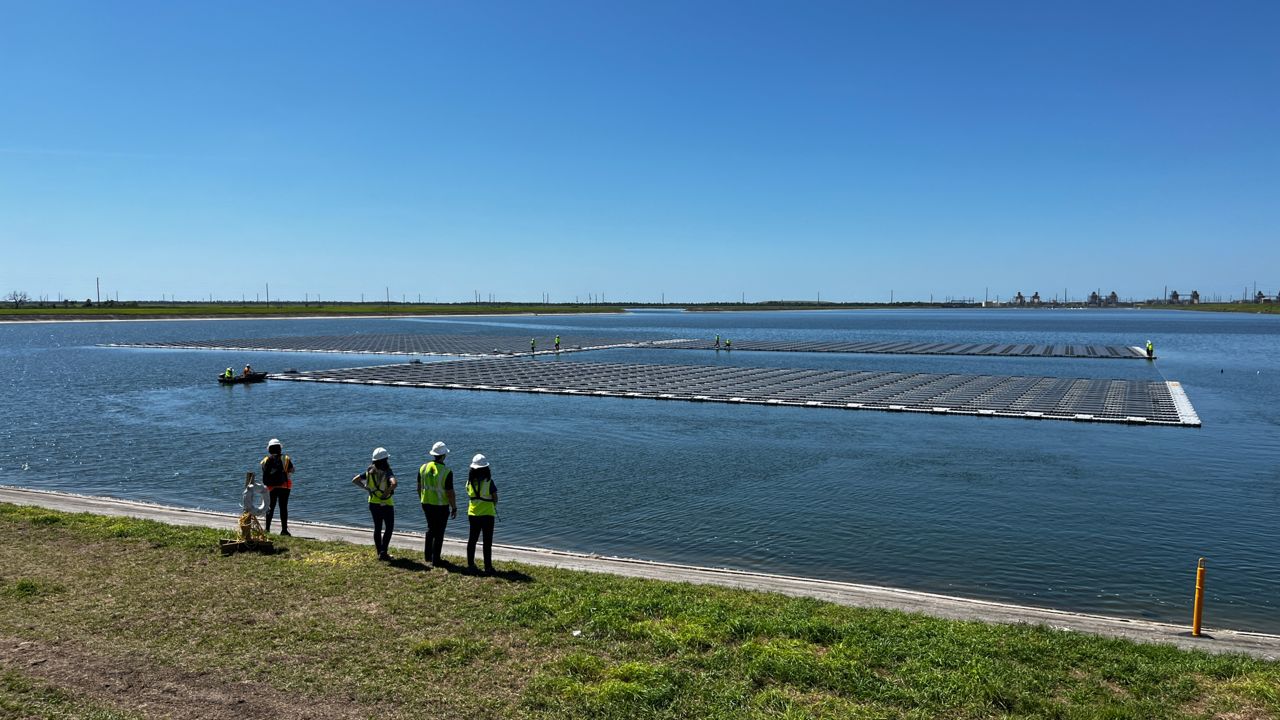BARTOW, Fla. — Duke Energy is testing out floating solar panels at its Hines Energy Complex in Bartow.
What You Need To Know
- A total of 1872 solar panels are connected and anchored down, right in the middle of Duke Energy's cooling pond.
- The panels are bifacial, meaning they collects solar energy on both sides.
- For now, it's a pilot program. But if it's successful, it could be expanded
A total of 1,872 solar panels are connected and anchored down, right in the middle of Duke Energy's cooling pond.
The view from above gives you a better idea of the size — two acres catching sunlight and turning it into energy.
Project manager Shayna Fraleigh took Spectrum News around the site. She has been with the company for three years as part of its distributed energy group that focuses on renewable energy sources.
“I love the renewables projects," Fraleigh said. "It feels good to feel like you’re making a difference. I've heard of floating solar mostly in other countries, but it's very limited here in the U.S."
"This is the first one that Duke Energy built that’s distribution connected so it was very exciting to be a part of it.”
The panels are bifacial, meaning they collects solar energy on both sides. It took six months to build and connect to the grid.

Fraleigh explained how cables brought the solar energy to shore.
“They come here under this concrete and they’re connected to all of our land side equipment," Fraleigh said. "So this is our medium voltage equipment. So we’ve got our inverters here that are converting the power.”
It's enough to power 100 homes and falls in line with the company's plan for a clean energy transition. The goal is net-zero methane emissions by 2030 and net-zero carbon emissions by 2050.
For now, it's a pilot program. But Fraleigh said success could mean expanding at the site and beyond.
“Everything we can learn from this helps us to do it bigger and better in the future," she said. “So that one day we can reach that net zero goal."
The pilot is part of Duke Energy's Vision Florida Program, which tests new, innovative technology to help reach that clean energy goal. The next project in the works is green hydrogen production in Volusia County.
“We are committed to building a smarter, cleaner energy future for our customers, while continuing to look for ways to maintain affordability and reliability,” said Melissa Seixas, Duke Energy Florida state president. “By exploring alternative solutions on a smaller scale and on our own property, we are maximizing the space and expanding our use and knowledge of innovative emission free technologies that will move us forward on our path to net-zero carbon emissions.”



